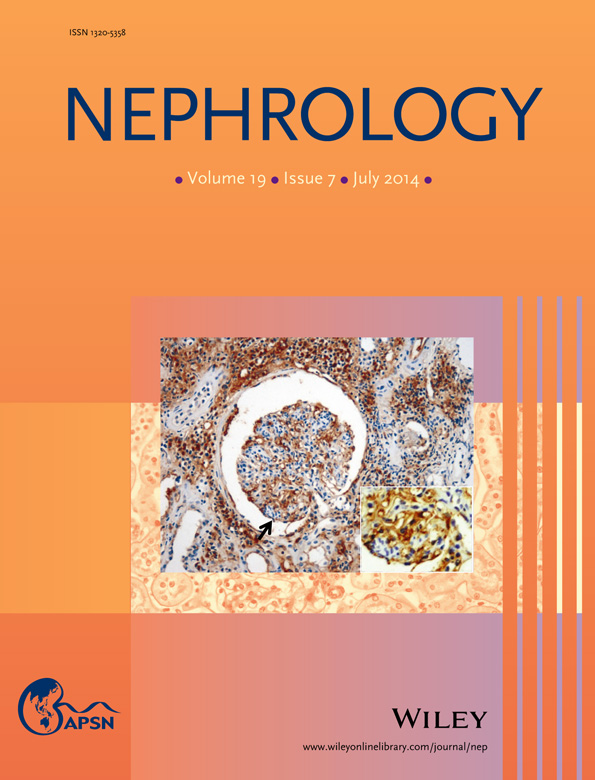Ultrastructural changes of podocyte foot processes during the remission phase of minimal change disease of human kidney
Abstract
Aim
The current study was designed to observe the ultrastructural changes of podocyte foot processes during the remission phase and its relationship with the amount of the proteinuria in patients with minimal change disease (MCD).
Methods
Electron micrographs of glomerular capillaries were taken from 33 adult cases with MCD, including 12 cases with nephrotic syndrome, 15 cases in partial remission and six cases in complete remission. The foot processes were classified into three grades by the ratio of the height to basal width: 0.5–1, 1–2 and ≥2. The foot process width (FPW) and the number of foot processes in different grades per 10 μm of glomerular basement membrane (GBM) were measured. Normal renal tissues from 12 nephrectomies for renal carcinoma were selected as controls.
Results
There were statistical differences (P = 0.001) in the mean FPW among the nephrotic group (1566.4 ± 429.4 nm), partial remission group (1007.8 ± 234.9 nm), complete remission group (949.8 ± 168.2 nm) and normal controls (471.9 ± 51.8 nm). For the height-to-width ratio ≥2, the number of foot process per 10 μm GBM was significantly greater in the normal group than that in the complete remission group (0.84 ± 0.24 vs. 3.84 ± 1.80, P = 0.016). Taking all three groups of patients together, the mean FPW showed correlation with the level of proteinuria (r = 0.506, P = 0.003).
Conclusion
There may be no causal relationship between proteinuria and foot process effacement. In complete remission phase, both FPW and shape of foot process had not returned to normal while proteinuria disappeared.




